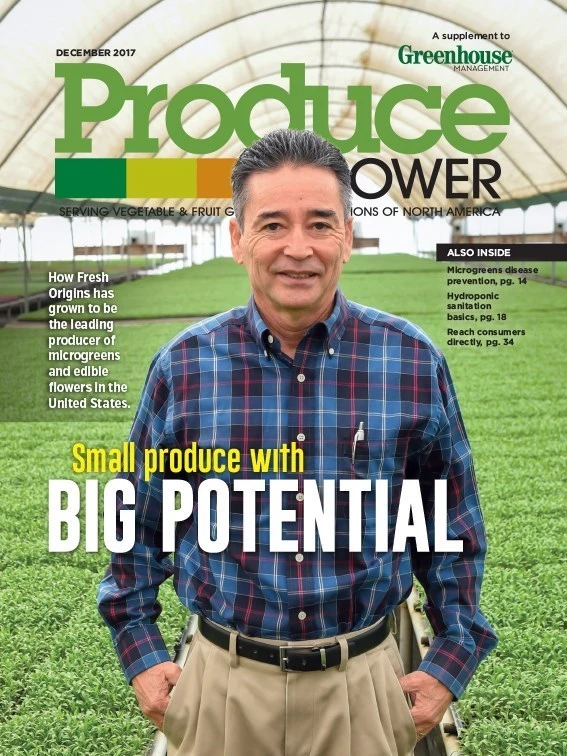
Jonathan Partlow, CEO of Aggressively Organic in Fishers, Ind., wanted to build an environment “that can go anywhere that a seed would go.” He wanted to decentralize the food supply chain.
The first step in Partlow’s plan was to create a personal hydroponic system that can operate in locations as varied as apartment buildings and schools; a system that produces healthy food, is cost-effective, fights food insecurity and doesn’t negatively affect the environment.
After five years of experimentation and testing, Partlow came up with the resulting product, the Micro Growth System — a small hydroponic chamber that consists of a glueless corrugated box, plastic liner, coco coir disc and nutrient solution mix.
By picking and eating lettuce and leafy greens he grows in the systems he created, Partlow has lost 40 pounds. He doesn’t exercise, and he drinks coffee every morning. “I walk by and I graze,” he says, “but I’m never hungry because my body’s getting nutrients.”
The company has shipped the systems, along with lettuce and leafy green seeds (Partlow says different crop types can also grow in the systems), to farmers in a beta group, and plans to launch a humanity project aimed at people who are food-insecure, such as hurricane victims in Puerto Rico. For each system Aggressively Organic’s customers purchase, the company plans to deliver one system to support a humanitarian cause.
Coming up with the right product required reconsidering production methods — Partlow explains that even the most basic hydroponic systems may cost thousands of dollars, and some require a space the size of a two-car garage, or larger, to operate. Then there’s the whole question of portability. “I went through more than 300 prototypes just on our corrugated box so we could make it so they fold flat,” Partlow says.
But he says he found a way to deliver a harvest that is ready every 21 days, all while charging the customer less than a large pizza, and refills for less than the cost of a side of breadsticks. “We can ship 50 complete systems — a farm, if you will — in a standard, 18-inch by 24-inch by 5-inch-deep box. That’s 50 complete systems with the nutrients, the growth medium and enough refills for a whole year.”
In traditional farming practices, a head of lettuce has a 3½-gallon water footprint, according to the study “Water footprints of derived crop products (1996-2005)” by Mekonnen, M.M. and Hoekstra, A.Y., published in Hydrology and Earth System Sciences. By comparison, Partlow says Aggressively Organic can produce lettuce using an eighth to a quarter-gallon of water, maximum. “We harvest when we’re hungry, so we cut all along the way,” Partlow says. “As the [plant] is growing, we cut what we need. If you have 50 of them, it’s fairly easy. You can make a salad for 10 people every day — like a full, ginormous, won’t-be-hungry-again salad.”
Get curated news on YOUR industry.
Enter your email to receive our newsletters.
Explore the December 2017 Issue
Check out more from this issue and find your next story to read.
Latest from Produce Grower
- The Growth Industry Episode 3: Across the Pond with Neville Stein
- PG CEA HERB Part 2: Analyzing basil nutrient disorders
- University of Evansville launches 'We Grow Aces!' to tackle food insecurity with anu, eko Solutions
- LettUs Grow, KG Systems partner on Advanced Aeroponics technology
- Find out what's in FMI's Power of Produce 2025 report
- The Growth Industry Episode 2: Emily Showalter on how Willoway Nurseries transformed its business
- 80 Acres Farms expands to Georgia, Texas and Colorado
- How BrightFarms quadrupled capacity in six months






